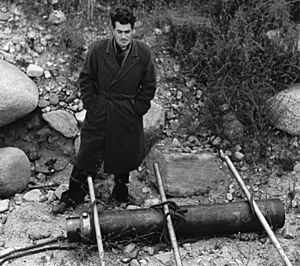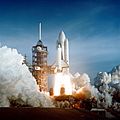Jack Parsons facts for kids
Quick facts for kids
Jack Parsons
|
|
|---|---|
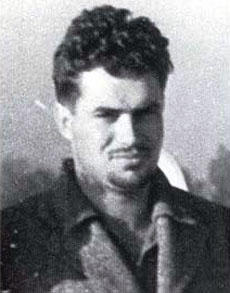
Parsons in 1941
|
|
| Born |
Marvel Whiteside Parsons
October 2, 1914 Los Angeles, California, U.S.
|
| Died | June 17, 1952 (aged 37) Pasadena, California, U.S.
|
| Cause of death | Explosion |
| Resting place | Mojave Desert |
| Other names | John Whiteside Parsons |
| Alma mater |
|
| Occupation |
|
| Organization |
|
| Spouse(s) |
|
John Whiteside Parsons (born Marvel Whiteside Parsons; October 2, 1914 – June 17, 1952) was an American rocket engineer and chemist. Associated with the California Institute of Technology (Caltech), Parsons was one of the principal founders of both the Jet Propulsion Laboratory (JPL) and the Aerojet Engineering Corporation. He invented the first rocket engine to use a castable, composite rocket propellant, and pioneered the advancement of both liquid-fuel and solid-fuel rockets.
Contents
Early life
Marvel Whiteside Parsons was born on October 2, 1914, at the Good Samaritan Hospital in Los Angeles to Ruth Virginia Whiteside (c. 1893–1952) and Marvel H. Parsons (c. 1894–1947). Their son was his father's namesake, but was known in the household as Jack. The marriage broke down soon after Jack's birth. His mother filed for divorce in March 1915.
Jack's father returned to Massachusetts, with Ruth forbidding him from having any contact with Jack. After the divorce, Ruth started calling her son John, but many friends throughout his life knew him as Jack.
Ruth's parents Walter and Carrie Whiteside moved to California to be with Jack and their daughter, using their wealth to buy an upscale house on Orange Grove Boulevard in Pasadena—known locally as "Millionaire's Mile"—where they could live together. Jack was surrounded by domestic servants. Having few friends, he lived a solitary childhood and spent much time reading; he took a particular interest in works of mythology, Arthurian legend, and the Arabian Nights. Through the works of Jules Verne he became interested in science fiction and a keen reader of pulp magazines like Amazing Stories, which led to his early interest in rocketry.
School years
At age 12 Parsons began attending Washington Junior High School, where he performed poorly—which biographer George Pendle attributed to undiagnosed dyslexia—and was bullied for his upper-class status. However, he formed a strong friendship with Edward Forman, a boy from a poor working-class family who defended him from bullies and shared his interest in science fiction and rocketry.
In 1928 the pair—adopting the Latin motto per aspera ad astra (through hardship to the stars)—began engaging in homemade gunpowder-based rocket experiments in the nearby Arroyo Seco canyon, as well as the Parsons family's back garden, which left it pockmarked with craters from explosive test failures. They incorporated commonly available fireworks into their rockets, and Parsons suggested using glue as a binding agent to increase the rocket fuel's stability. This research became more complex when they began using materials such as aluminium foil to make the gunpowder easier to cast.
In 1929 he began attending John Muir High School, where he maintained an insular friendship with Forman and was a keen participant in fencing and archery. After he received poor school results, Parsons's mother sent him away to study at the Brown Military Academy for Boys, a private boarding school in San Diego, but he was expelled for blowing up the toilets.
Parsons began studying at the privately run University School, a liberal institution that took an unconventional approach to teaching. He flourished academically, becoming editor of the school newspaper, El Universitano, and winning an award for literary excellence; teachers who had trained at the nearby California Institute of Technology (Caltech) honed his attention on the study of chemistry.
With the family's financial difficulties deepening, Parsons began working on weekends and school holidays at the Hercules Powder Company, where he learned more about explosives and their potential use in rocket propulsion. He and Forman continued to independently explore the subject in their spare time, building and testing different rockets, sometimes with materials that Parsons had stolen from work. Parsons soon constructed a solid-fuel rocket engine, and with Forman corresponded with pioneer rocket engineers including Robert H. Goddard, Hermann Oberth, Konstantin Tsiolkovsky, Willy Ley and Wernher von Braun. Parsons and von Braun had hours of telephone conversations about rocketry in their respective countries as well as their own research.

Parsons graduated from University School in 1933. He continued to pursue his interests in literature and poetry. He enrolled in Pasadena Junior College with the hope of earning an associate degree in physics and chemistry, but dropped out after one term because of his financial situation.
Parsons took up permanent employment at the Hercules Powder Company. His employers then sent him to work at their manufacturing plant in Hercules, California on San Francisco Bay, where he earned a relatively high monthly wage of $100. He saved money in hopes of continuing his academic studies and began a degree in chemistry at Stanford University, but found the tuition unaffordable and returned to Pasadena.
GALCIT Rocket Research Group
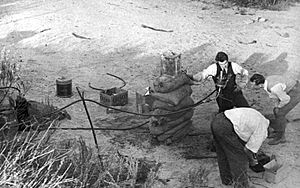
In 1934 Parsons united with Forman and graduate Frank Malina to form the Caltech-affiliated Guggenheim Aeronautical Laboratory (GALCIT) Rocket Research Group, supported by GALCIT chairman Theodore von Kármán.
Parsons, Forman, and Malina applied for funding from Caltech together; they did not mention that their ultimate objective was to develop rockets for space exploration, realizing that most of the scientific establishment then considered such ideas science fiction. Caltech's Clark Blanchard Millikan immediately rebuffed them, but Malina's doctoral advisor Theodore von Kármán saw more promise in their proposal and agreed to allow them to operate under the auspices of the university's Guggenheim Aeronautical Laboratory (GALCIT). Naming themselves the GALCIT Rocket Research Group, they gained access to Caltech's specialist equipment, though the economics of the Great Depression left von Kármán unable to finance them.
The trio focused their distinct skills on collaborative rocket development; Parsons was the chemist, Forman the machinist, and Malina the technical theoretician. Their first liquid-fuel motor test took place near the Devil's Gate Dam in the Arroyo Seco on Halloween 1936.
Three attempts to fire the rocket failed; but hey continued their experiments throughout the last quarter of 1936. After the final test was successfully completed in January 1937 von Kármán agreed that they could perform future experiments at an exclusive rocket testing facility on campus.
While working at Caltech, Parsons was admitted to evening courses in chemistry at the University of Southern California (USC), but distracted by his GALCIT workload he attended sporadically and received unexceptional grades.
By early 1938, the Group had made their static rocket motor, which originally burned for three seconds, run for over a minute.
Advancing JATO and foundation of Aerojet: 1939–1942
At von Kármán's suggestion, Frank Malina approached the National Academy of Sciences (NAS) Committee on Army Air Corps Research to request funding for research into what they referred to as "jet propulsion", a term chosen to avoid the stigma attached to rocketry.
In 1939 the GALCIT Group gained funding from the National Academy of Sciences (NAS) to work on Jet-Assisted Take Off (JATO) for the U.S. military.
The solid JATO fuel invented by Parsons consisted of amide, corn starch, and ammonium nitrate bound together in the JATO unit with glue and blotting paper. It was codenamed GALCIT-27, implying the previous invention of 26 new fuels. The first JATO tests using an ERCO Ercoupe plane took place in late July 1941. Though they aided propulsion, the units frequently exploded and damaged the aircraft.
Finally, the right combination of chemicals for the fuel was found. It provided five times more thrust than GALCIT-27, and again reduced takeoff distance by 30%. The Group agreed to produce and sell 60 JATO engines to the United States Army Air Corps. To do so they formed the Aerojet Engineering Corporation in March 1942, opening their offices on Colorado Boulevard.
Despite these successes, Parsons, the project engineer of Aerojet's Solid Fuel Department, kept on experimenting and improving the formula. He invented solid fuel GALCIT-53, which proved to be significantly more stable than the Group's earlier concoctions, and providing a thrust 427% more powerful than that of GALCIT-27. Plasticized variants of Parsons' solid-fuel design invented by JPL's Charles Bartley were later used by NASA in Space Shuttle Solid Rocket Boosters and by the Strategic Air Command in Polaris, Poseidon and Minuteman intercontinental ballistic missiles.
Foundation of JPL: 1942–1944
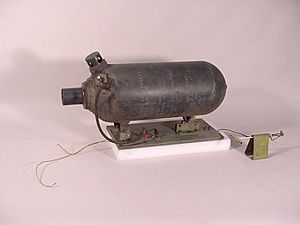
As the U.S. became aware that Nazi Germany had developed the V-2 rocket, the military gave the Group a $3 million grant to develop rocket-based weapons, and the Group was expanded and renamed the Jet Propulsion Laboratory (JPL). Parsons was expelled from JPL and Aerojet in 1944 owing to his hazardous workplace conduct. He and Forman left the company in 1944, selling their stock.
Personal life
Parsons was also known for personal eccentricity such as greeting house guests with a large pet snake around his neck, driving to work in a rundown Pontiac, and using a mannequin dressed in a tuxedo with a bucket labelled "The Resident" as his mailbox. He was a fencing and archery enthusiast, and also enjoyed playing pranks on his colleagues.
He was a close friend of L. Ron Hubbard, the founder of Scientology, and indulged in various spiritiual practices.
Parsons met his first wife Helen Northrup at a local church dance and proposed marriage in July 1934. She accepted and they were married in April 1935 at the Little Church of the Flowers in Forest Lawn Memorial Park, Glendale. Their marriage ended in 1946. They had no children.
Parsons entered into a relationship with Marjorie Cameron who was an American artist, poet, and actress. They were married on October 19, 1946, four days after his divorce from Helen was finalized, with Forman as their witness.
Death
Parsons died in 1952 at the age of 37 in a home laboratory explosion that attracted national media attention; the police ruled it an accident.
A private prayer service was held for Parsons at the funeral home where his body was cremated. His ashes were scattered in the Mojave Desert.
Legacy
Although academic interest in his scientific career was negligible, historians have come to recognize Parsons's contributions to rocket engineering. For these innovations, his advocacy of space exploration and human spaceflight, and his role in founding JPL and Aerojet, Parsons is regarded as among the most important figures in the history of the U.S. space program.
He has been the subject of several biographies and fictionalized portrayals.
Parsons' obituary listed him as a member of the Army Ordnance Association, the American Institute of Aeronautics and Astronautics, the American Chemical Society, the American Association for the Advancement of Science, and—despite his lack of an academic degree—the Sigma Xi fraternity. It also stated that he had turned down several honorary degrees.
In 2014, AMC Networks announced plans for a serial television dramatization of Parsons' life, but in 2016 it was reported that the series "will not be going forward." In 2017, the project was adopted as a web television series by CBS All Access. Strange Angel, produced by Mark Heyman and starring Irish actor Jack Reynor as Parsons, premiered in June 2018 and ran for two seasons. In 2018, Parsons was featured in an episode of the Amazon series Lore.
Parsons is the subject of musical tributes by Johan Johannson (Fordlandia, 2008), Six Organs of Admittance (Parsons' Blues, 2012), The Claypool Lennon Delirium (South of Reality, 2019), and Luke Haines and Peter Buck (Beat Poetry for Survivalists, 2020).
Patents
- U.S. Patent 2,484,355, Aerojet 1945. Reaction motor with propellant charge mounted in it. Classification: Propellant charge supports.
- U.S. Patent 2,563,265, Aerojet 1943. Rocket motor with solid propellant and propellant charge therefor. Classification: Rocket-engine plants, i.e. plants carrying both fuel and oxidant therefor; Control thereof using semi-solid or pulverulent propellants.
- U.S. Patent 2,573,471, Aerojet 1943 with Frank J. Malina. Reaction motor operable by liquid propellants and method of operating it. Classification: Propellants.
- U.S. Patent 2,693,077, 1944/1950 with Frank J. Malina. Reaction motor operable by liquid propellants and method of operating it. Classification: Propellants.
- U.S. Patent 2,771,739, Aerojet 1953 with Frank J. Malina. Rocket propulsion method. Classification: Propellants.
- U.S. Patent 2,774,214, Aerojet 1954 with Frank J. Malina, 1954. Rocket propulsion method. Classification: Compositions in which the components are separately stored ...
- U.S. Patent 2,783,138, Aerojet 1944. Propellant compositions. Classification: Catalytic reforming characterised by the catalyst used containing platinum group metals or compounds thereof.
-
Parsons befriended L. Ron Hubbard.
-
The modern logo of the Jet Propulsion Laboratory
-
Parsons is credited for inventions used in rocket technology such as the Space Shuttle.
See also
 In Spanish: Jack Parsons para niños
In Spanish: Jack Parsons para niños




